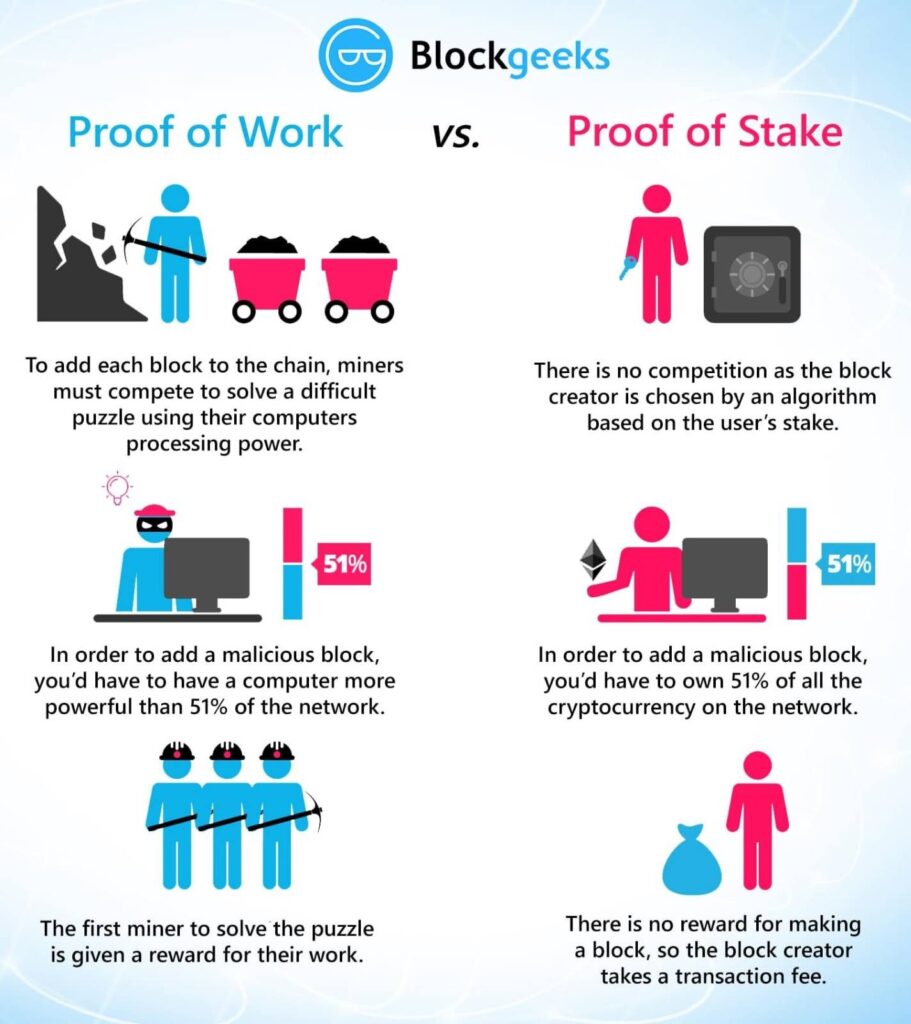A consensus mechanism is a technique for ensuring the security of a distributed database and verifying entries.
Proof-of-Stake (PoS) is one of the most popular consensus algorithms used by blockchain and cryptocurrency projects to secure their networks. Proof-of-Stake differs from Proof-of-Work in several ways, allowing for faster speeds and more efficient energy usage by changing certain fundamental validation processes.

Certain PoS networks have minimum staking requirements to become a validator. Following ‘The Merge,’ Ethereum will require 32ETH ($47,250.56 as of July 27th 2022) to become a validator.
PoS requires validators to keep and stake tokens, in contrast to PoW mechanisms that require miners to solve cryptographic problems. Proof of Stake validators most commonly become a node by depositing a large portion of capital, and coin holders offer coins as collateral for the privilege of validating blocks. The amount of staked crypto can influence the likelihood of a node being chosen as the next validator. In addition, various adapted PoS consensuses exist which modify some form of this selection process. Each Proof of Stake cryptocurrency has its own unique rulesets, aiming to optimize their network and improve on competitors.
If a node wishes to cease validating, the system releases the stake and earned rewards after a specific time. This allows the network to verify the node’s historic behavior, ensuring that no fraudulent activity took place during its tenure.
An example of a Proof of Stake system is Cardano. Development of Cardano formally began in 2015, and launched in 2017. Cardano uses its own unique Proof of Stake consensus mechanism, “Ouroboros.” Cardano claims that with Ouroboros, their blockchain operations are highly scalable and sustainable secure, leading to a blockchain based future.
Two distinct layers make up the Cardano blockchain: the Cardano Settlement Layer (CSL) and the Cardano Computing Layer (CCL). Of these two, The CSL holds the accounts and balances ledger. Additionally, the CSL is also where the Ouroboros consensus mechanism validates the transactions Using the operations of smart contracts, the system conducts all calculations for applications operating on the blockchain at the computing layer. By dividing the blockchain into two levels, the Cardano network can theoretically execute up to one million transactions per second with the proposed “Hydra” project.
In addition to the standard Proof of Stake paradigm, many customized variants exist. For example, the Leased Proof of Stake or the Delegated Proof of Stake algorithms. Further, hybrid consensus systems also exist, such as the Hybrid Proof of Work/Proof of Stake, which combines characteristics of the PoW and PoS models.
Although Proof-of-Stake blockchains aim to solve multiple problems facing blockchains, including scalability, security, environmentally impact, the consensus is yet to fully solve the scalability trilemma.

